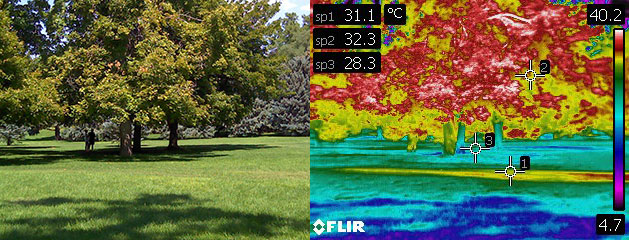
A new study by Carolina Gómez-Navarro and GCSC affiliate faculty Diane Pataki, Eric Pardyjak, and Dave Bowling, looks at how trees and grass can help mitigate excessive heat in urban areas. Hard surfaces like roofs, buildings, and pavement absorb the sun’s heat and radiate it into the surroundings, creating a “heat island effect”. While trees cast cooling shade, the team found that a more effective cooling solution occurs with a mix of trees and turf grass. Read about the study in At The U.
